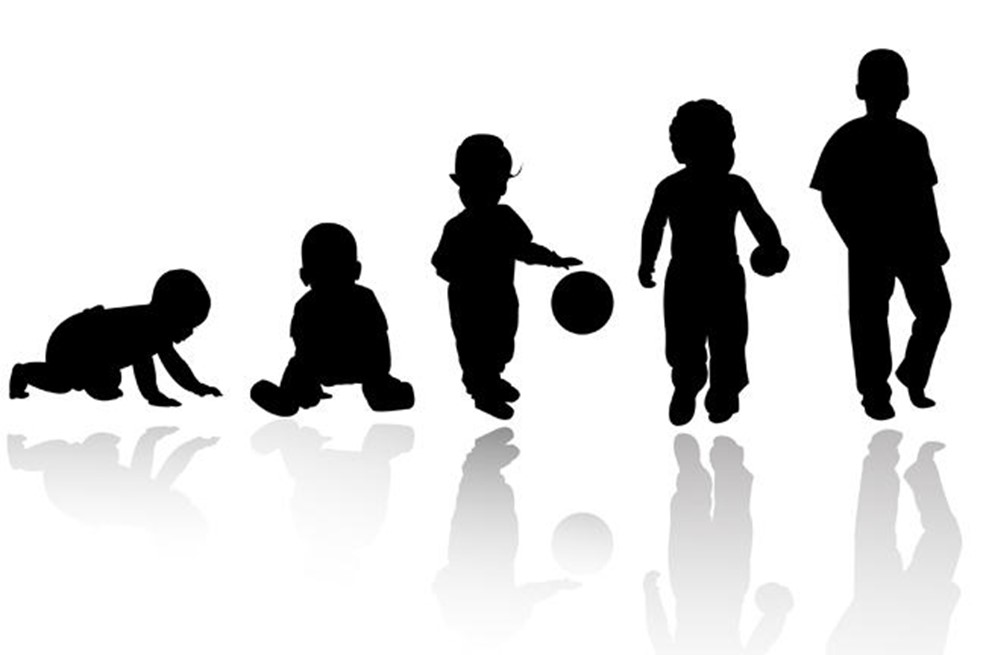The Art and Science of Infancy & Child Development
In this article I will discuss what I like to refer to as the “Fourth Trimester” of pregnancy. Not a term I coined, but one that is apropos when we come to realize that human babies are by and large, born prematurely. Not in a medical sense, but in an anthropological sense.
Although one might expect to hear a collective groan at the thought of a fourth trimester, one could also anticipate and far more vocal gasp in unison to learn that this 4th trimester lasts about 25 years. This development is a multi-faceted, and incremental progression from new-born to young adult.
In the broadest sense of the terms, the big idea here is that a completely and utterly dependent fetus is taken from inside the womb, only to become a completely and utterly dependent baby outside the womb. The big difference here between the internal and external womb is that the external one has considerably more “stress” than the internal. As well, the external womb requires a more active role on the part of the caregiver to reduce those stressors and regulate the infant’s à toddler’s à child’s à and adolescent’s psycho-socio-emotional-physiological well-being. Hopefully imbuing them with the ability to eventually self-regulate along the way.
To help set the stage for a new, or more enlightened perspective on this important life-stage, let’s briefly look back at our evolution.
Bear with me as I paint a somewhat cursory scientific backdrop. Of particular interest to us in this article are anthropologists’ explanation of 2 notable milestones in human evolution: the transition to bipedalism (walking upright on two feet), and the growth in the human brain & head size relative to our bodies. Think of these two phenomena as competing dynamics. Early hominids (early humans) had to hunt and/or forage to survive – walking upright facilitated that nicely. However, the demands of pregnancy and childbirth placed on the female anatomy required an efficiency of sorts. Physiological adaptations meant that females gave birth to infants before their cranium-encased brains were fully developed as a means of mitigating prolonged anatomical/physical trauma.
 We now know that the most explosive period of brain growth occurs postnatally, as well as the critical role of the Evolved Developmental Nest (Darcia Navarez, 2013) plays in childhood development. The more complex name given to this by Stuart Shanker is Secondary Altriciality. And therein lies the art – in the developmental nest we create for infants as they grow.
We now know that the most explosive period of brain growth occurs postnatally, as well as the critical role of the Evolved Developmental Nest (Darcia Navarez, 2013) plays in childhood development. The more complex name given to this by Stuart Shanker is Secondary Altriciality. And therein lies the art – in the developmental nest we create for infants as they grow.


![The Art and Science of Confabulation vs. Lying [2025-07]](https://cognitivedynamics.ca/wp-content/uploads/2025/07/2025-07-Lying-v-Confabulating-child-in-distress-500x383.jpg)
![The Art and Science of Good Stress vs. Bad Stress [2025-06]](https://cognitivedynamics.ca/wp-content/uploads/2025/07/2025-06-Stress-Continuum-Yerkes-Dodson-500x383.png)
![The Art and Science of Healing the Divide [2025-05]](https://cognitivedynamics.ca/wp-content/uploads/2025/07/Healing-the-Divide-1-500x383.jpg)
![The Art and Science of Relationship Importance [2025-04]](https://cognitivedynamics.ca/wp-content/uploads/2025/07/Relationship-Importance-1-500x383.jpg)
Leave A Comment